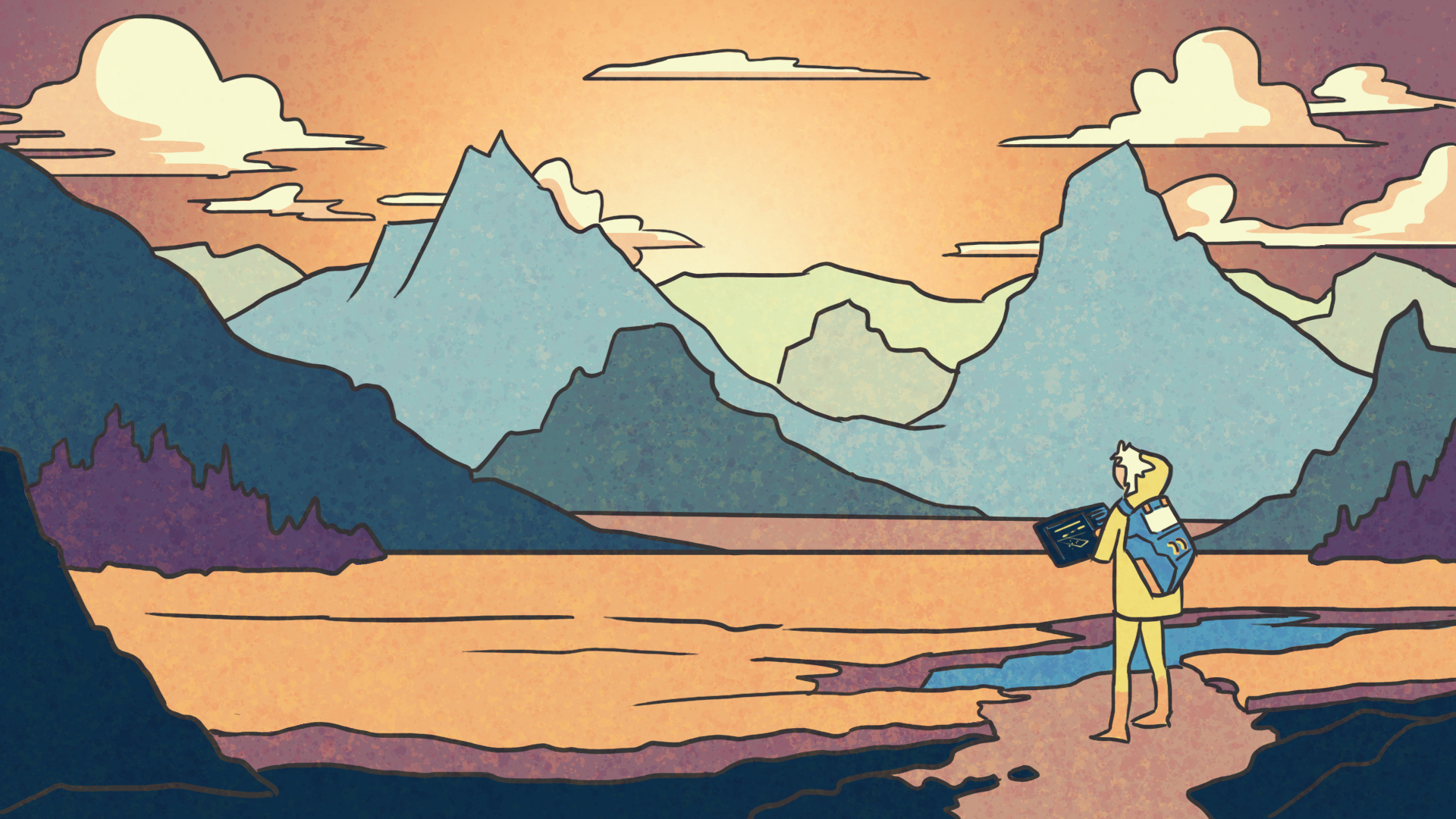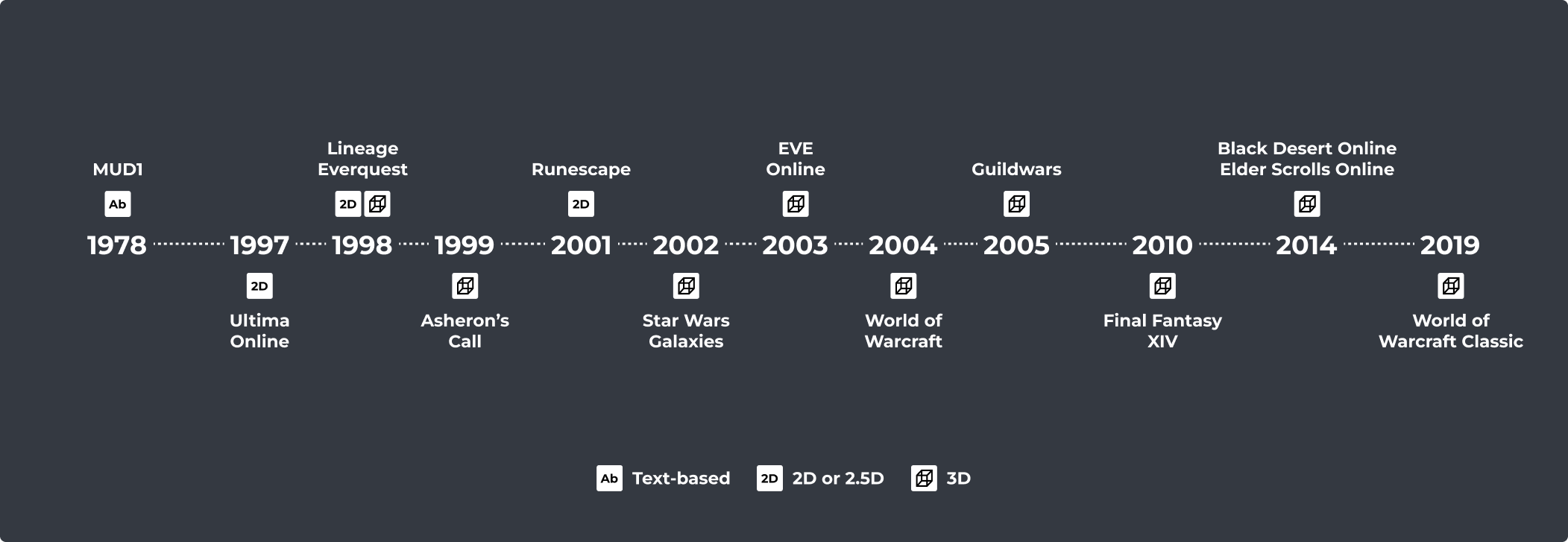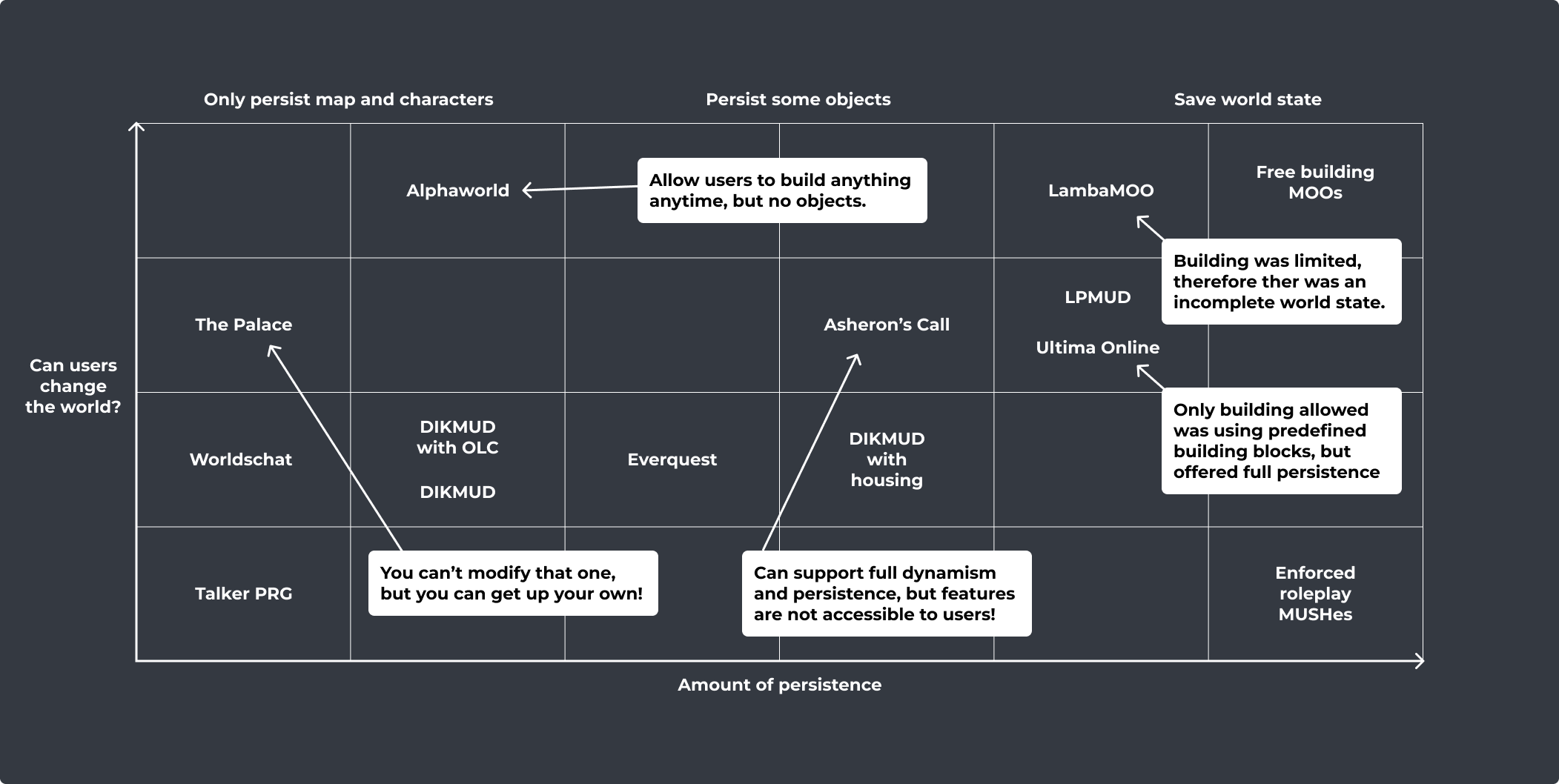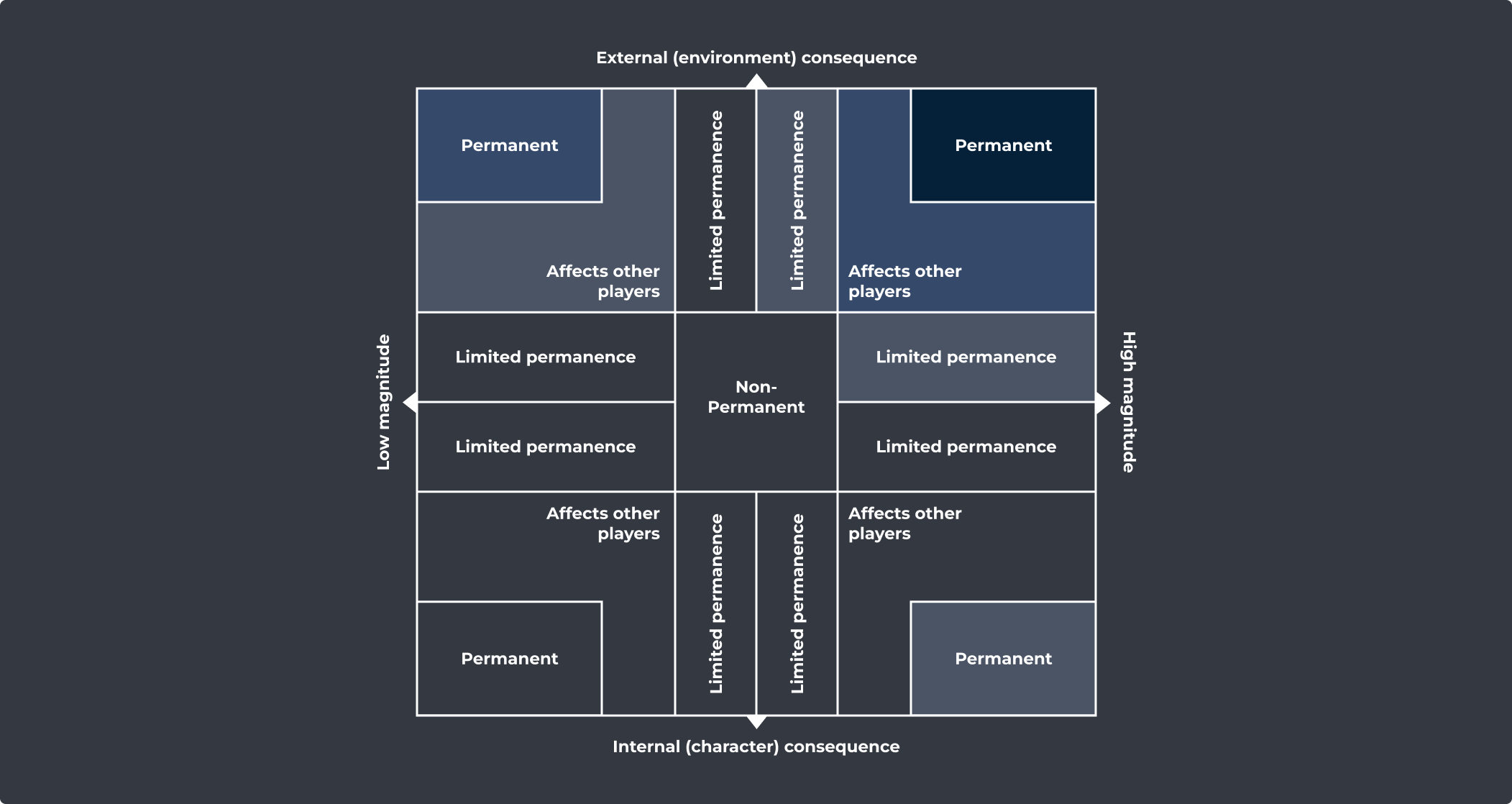Devlog #1: A warm, persistent welcome!
27.10.23 • Vik

Hi, hello and salutations! I’m Vik, principal game designer here at Arctic Theory, wishing you a very warm welcome to the inaugural edition of our development blog. I want to kick things off by delving straight into the topic of persistent game worlds and our motivations for building them.
At Arctic Theory, we are ardent believers in the power of online multiplayer gaming, especially MMOs, to craft lasting and memorable experiences. Our fundamental mission is to provide players with game worlds that transcend mere digital landscapes, evolving into vibrant domains where their adventures bear tangible and lasting consequences.
Our pledge to uphold these principles, which have been echoed by many before, is anchored in our profound comprehension of persistence. Drawing from our team’s long experience in building persistent game worlds (most notably Eve Online, perhaps one of the most enduring MMOs ever) and years of dedicated research into the profound implications of persistence on engaging gameplay, we are poised to share some of our learnt lessons in this initial devlog.
These insights will echo the core foundational pillars of Arctic Theory as a company and the influence they exerted over the design of our latest creation, Pioneers of New Dawn. This is a high-level prelude to many upcoming devlogs, where I will further dig into the specific features and elements of Pioneers of New Dawn.
The Allure of Persistence
What is it that captivates us about persistent game worlds? Why do we yearn for the endurance of virtual entities, and what does persistence truly signify?
Definition
Persistence embodies the notion of continued or prolonged existence, an implicit and indomitable quality intrinsic to the real world. Scholars have suggested that persistence is “a quality of actual life” (Lankoski et al. 2004). Whether we like it or not, our actions yield lasting consequences, affording us the capacity to nurture growth and progress, or, conversely, to inflict harm upon our environment by remaining oblivious to the cumulative repercussions, such as the proliferation of litter on the ground or the formation of sprawling garbage islands in our oceans.
Brief History
In respect to game worlds, persistence was a more popular design property in their genesis. What first began with primarily open-ended, text-based persistent worlds has evolved into a full universe of different games offering their inherent characteristics and variations, yet trending towards the themepark rather than a sandbox approach, with less persistent worlds compared to their predecessors. For more on MMORPG history, I highly recommend Richard Bartle (Bartle, 2003), (Bartle, 2016a), and Pepe's article (Pepe, 2020).

Varying Degrees of Persistence
Virtual game worlds are characterized by a spectrum of persistence, with the minimal threshold being their inherent capacity to evolve and persist independently of player interaction. This foundational attribute enables designers to craft gameplay experiences that align with varying degrees of persistence. For instance, games like World of Warcraft opt to prioritize the persistence of character data over the persistence of the in-game world. In such a context, players cannot put items on the ground or anticipate that a bandit camp they've cleared will remain unchanged after a server reset. This is a convenient choice and characteristic for many modern MMORPGs, as it reduces many of the complexities that come with world persistence, especially if there is a particular narrative that designers want the players to follow.

This comes at a hefty price, though: the loss of having much (if any) real impact on the world. Attempts to remedy this drawback have included (among many) instanced housing and intricate social systems that provide shared storage options, thus enabling players to contribute to and collaborate on their guild's progression. Nevertheless, these solutions unarguably fail to replicate the appeal of genuine construction or terraforming with real lasting impact within the same shared world.
The Complex Yet Untapped Potential of Truly Persistent Game Worlds
Much like real life, world persistence can engender many unintended consequences. For instance, introducing player housing requires careful consideration of where players can place their houses within the game world to avert obstructing important areas of the map such as a mountain pass or essential quest objectives. A common pitfall is underestimating the profound implications of persistence, particularly when dealing with the intricate and intertwined systems characteristic of most MMOs. Beyond spatial challenges, temporal dimensions also add to the complexity. In resolving where players can build houses, questions of their duration and quantity arise as well, with decay and limitations serving as partial solutions. The precise values of these parameters are heavily contingent on the specific gameplay dynamic, but often they become subject to long testing cycles in the process and frequently disappoint player expectations on the first run.

While world persistence is undeniably complex and demanding, it unlocks an array of opportunities for features that empower players with meaningful choices and lasting influence over the game world. Combining persistence with shared social contexts, the capacity to explore uncharted realms, and seamless learning, we praise genuinely significant and highly engaging gameplay. The potential of persistent game worlds remains largely untapped, and these are some of the facets upon which we have focused.
Player impact
Persistent game worlds offer players truly unique experiences: the power to influence and shape the environment. It's not just about playing in a pre-defined sandbox; it's about molding that sandbox as you venture through it. Your choices, your actions, and your decisions echo through the world, altering its landscape, forging alliances, and leaving a trail of your accomplishments behind.
Community & Connection
As noted by Raph Koster on multiple occasions, early MMOs served as a precursor to the advent of social media, and the creation of genuinely social worlds stands as a pivotal aspect of what captivates us. Persistent worlds foster vibrant, player-driven communities, serving as a meeting ground for forging friendships, nurturing bonds, and collaborating on grand adventures. It transcends mere gaming—it encompasses entire social ecosystems.
Rich Storytelling
In a persistent game world, the story is not static; it's ever-evolving. We're captivated by the idea of narrative flexibility, where each player becomes a part of a living, breathing story. From epic lore and environmental storytelling to the intimately woven player narratives, persistence has the potential to serve as a canvas for lived stories, etching players' legacies into the very essence of the game.
Join Us on the Journey!
Pioneers of New Dawn embodies these ideals, and that's what fuels our development. We're crafting a world where your actions leave their mark, where your impact is profoundly recognized and ever-evolving, where you're not just a player but an essential part of a vibrant community building something together.
This development blog merely marks the inception of a journey we are eager to share. In the coming entries, we will offer additional insights, unveil concept art, provide development updates, and divulge behind-the-scenes stories as our work progresses. Your feedback, ideas, and questions are invaluable to us, so please feel free to share your thoughts and connect with us on Discord to stay up to date of the latest developments.
References
Bartle, R. A. (2003). Designing virtual worlds. New Riders.
Bartle, R. A. (2016b). The decline of mmos. In Global Game Industries and Cultural Policy, pages 303–316. Springer.
Gustafsson, V (2021). Designing persistent player narratives in digital game worlds.
Koster, R. (2009b). A sandbox to play in.
https://www.raphkoster.com/games/insubstantial-pageants/a-sandbox-to-play-in/
Lankoski, P., Heliö, S., Nummela, J., Lahti, J., Mäyrä, F., and Ermi,L. (2004). A case study in pervasive game design: the songs of north. In Proceedings of the third Nordic conference on Human-computer interaction, pages 413–416.
Pepe, F. (2020). Roblox is a mud: The history of muds, virtual worlds & mmorpgs. https://felipepepe.medium.com/roblox-is-a-mud-the-history-of-virtual-worlds-muds-mmorpgs-12e41c4cb9b
Tychsen, A. and Hitchens, M. (2006). Ghost worlds–time and consequence in mmorpgs. In International Conference on Technologies for Interactive Digital Storytelling and Entertainment, pages 300–311. Springer.
